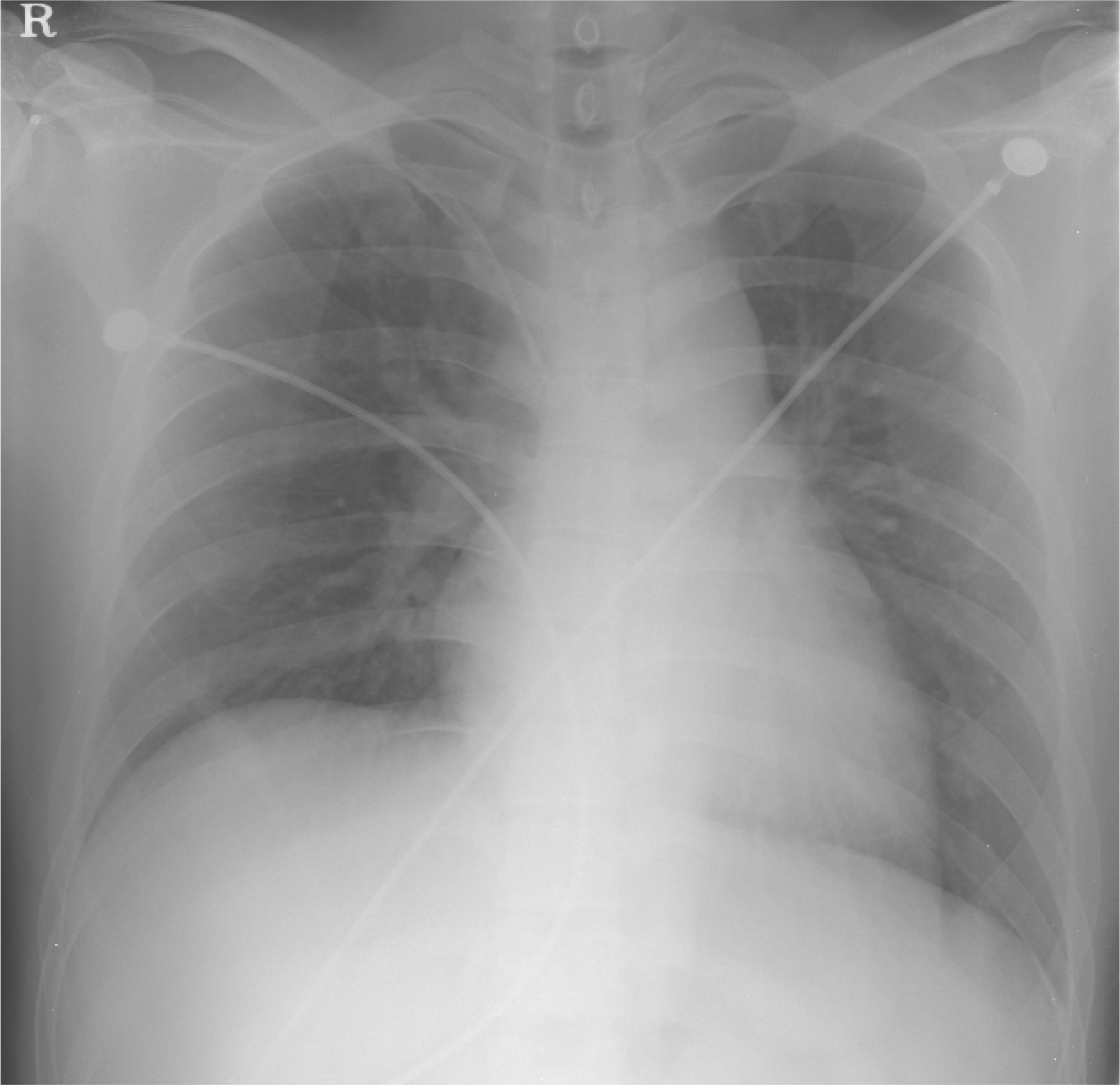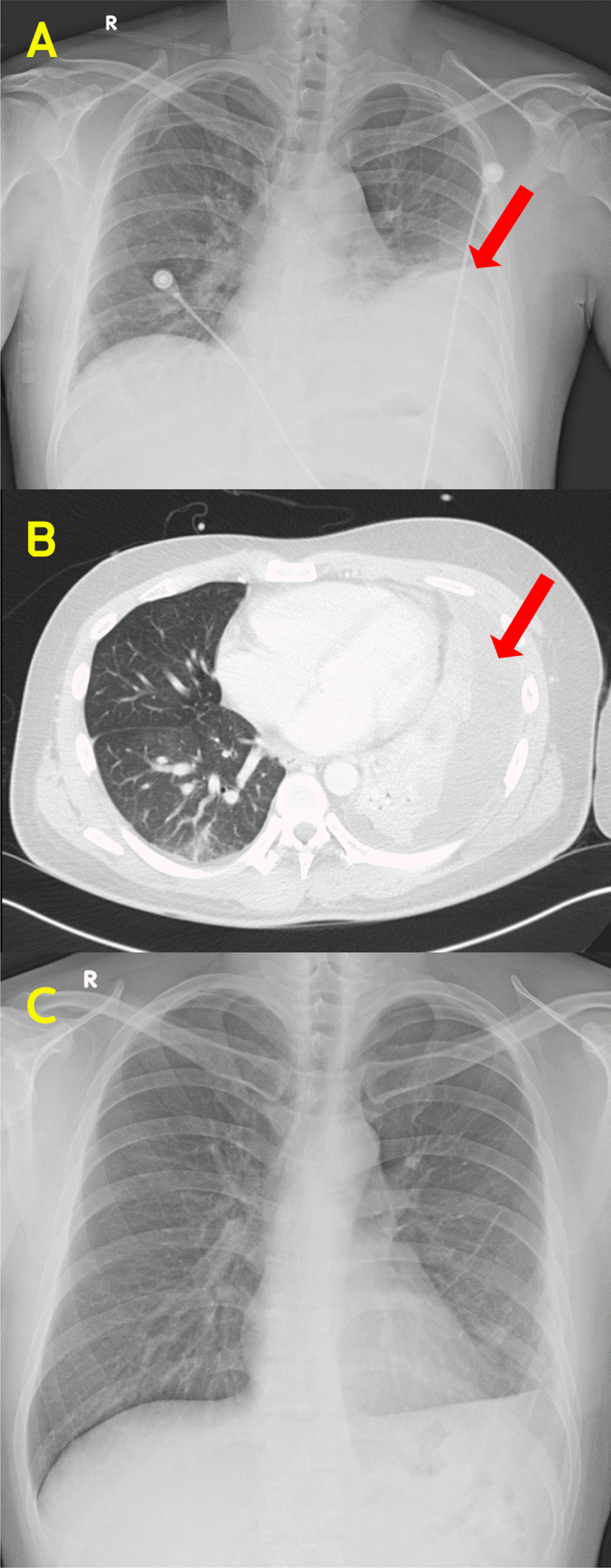Abstract
Lemierre syndrome is characterized by anaerobic bacterial infection in the head and neck and clinical or radiological evidence of internal jugular vein thrombophlebitis. The most common pathogens are Fusobacterium species, particularly Fusobacterium necrophorum. Septic emboli resulting from infected thrombophlebitis of the internal jugular vein leads to metastatic infections involving lung, liver, kidney, bone and central nervous system. The accurate diagnosis and treatment is important because it may be associated with a high mortality rate if untreated. We present a case of 28-year-old man with an atypical history for the diagnosis of Lemierre syndrome, which showed no definite evidence of internal jugular thrombophlebitis.
Go to : 
REFERENCES
1.Lemierre A. On certain septicaemias due to anaerobic organisms. The Lancet. 1936. 227:701–3.
2.Golpe R., Marin B., Alonso M. Lemierre's syndrome (necrobacillosis). Postgrad Med J. 1999. 75:141–4.
3.Sinave CP., Hardy GJ., Fardy PW. The Lemierre syndrome: suppurative thrombophlebitis of the internal jugular vein secondary to oropharyngeal infection. Medicine (Baltimore). 1989. 68:85–94.
4.Chirinos JA., Lichtstein DM., Garcia J., Tamariz LJ. The evolution of Lemierre syndrome: report of 2 cases and review of the literature. Medicine (Baltimore). 2002. 81:458–65.
5.Syed MI., Baring D., Addidle M., Murray C., Adams C. Lemierre syndrome: two cases and a review. Laryngoscope. 2007. 117:1605–10.

6.Karkos PD., Asrani S., Karkos CD., Leong SC., Theochari EG., Alexopoulou TD, et al. Lemierre's syndrome: A systematic review. Laryngoscope. 2009. 119:1552–9.

7.Henry S., DeMaria A Jr.., McCabe WR. Bacteremia due to Fusobacterium species. Am J Med. 1983. 75:225–31.

8.Leugers CM., Clover R. Lemierre syndrome: post-anginal sepsis. J Am Board Fam Pract. 1995. 8:384–91.
9.Lustig LR., Cusick BC., Cheung SW., Lee KC. Lemierre's syndrome: two cases of postanginal sepsis. Otolaryngology--Head and Neck Surgery. 1995. 112:767–72.

10.Shakeel M., McCluney N., Li L., Newton JR. Oropharyngeal infection with metastatic hand infection: an uncommon variant of Lemierre's syndrome. J Pak Med Assoc. 2010. 60:494–6.
11.Williams A., Nagy M., Wingate J., Bailey L., Wax M. Lemierre syndrome: a complication of acute pharyngitis. Int J Pediatr Otorhinolaryngol. 1998. 45:51–7.

12.Ridgway JM., Parikh DA., Wright R., Holden P., Armstrong W., Camilon F, et al. Lemierre syndrome: a pediatric case series and review of literature. Am J Otolaryngol. 2010. 31:38–45.

13.Seidenfeld SM., Sutker WL., Luby JP. Fusobacterium necrophorum septicemia following oropharyngeal infection. Jama. 1982. 248:1348–50.

14.GOLDHAGEN J., ALFORD BA., PREWITT LH., THOMPSON L., HOSTETTER MK. Suppurative thrombophlebitis of the internal jugular vein: report of three cases and review of the pediatric literature. The Pediatric infectious disease journal. 1988. 7:410–3.
Go to : 




 PDF
PDF ePub
ePub Citation
Citation Print
Print





 XML Download
XML Download